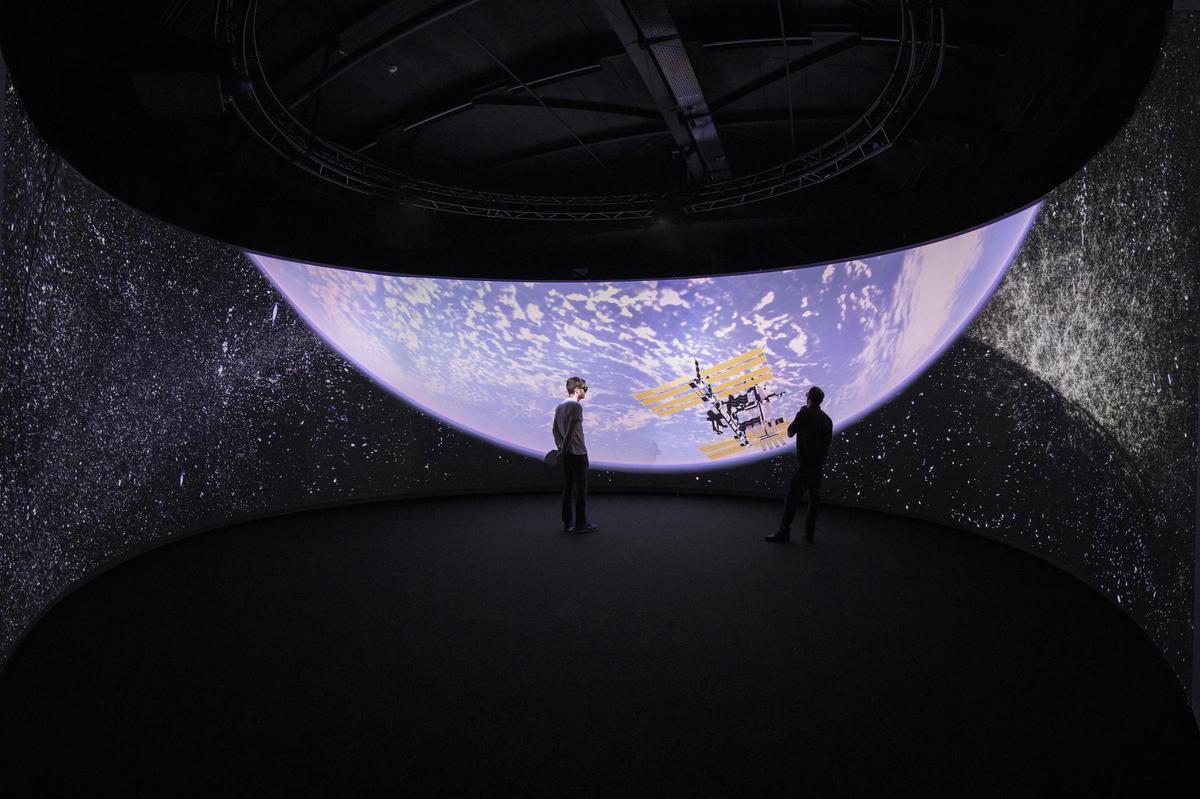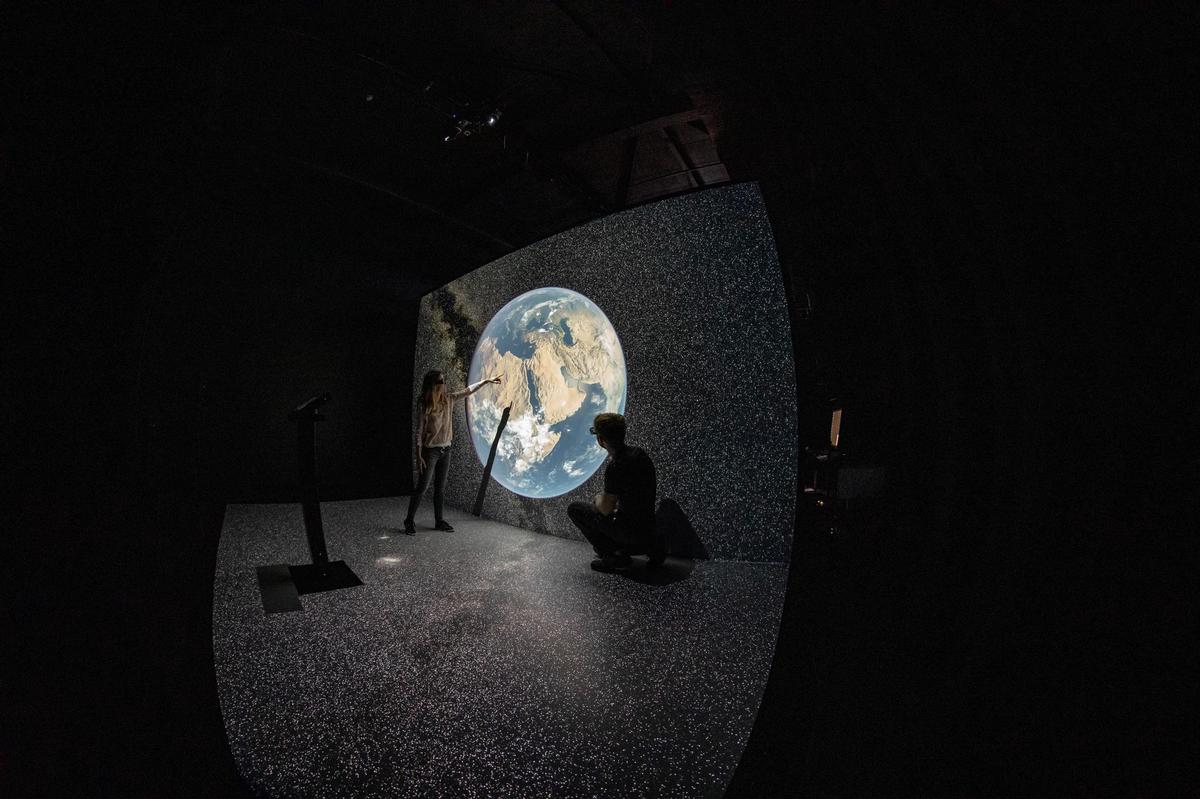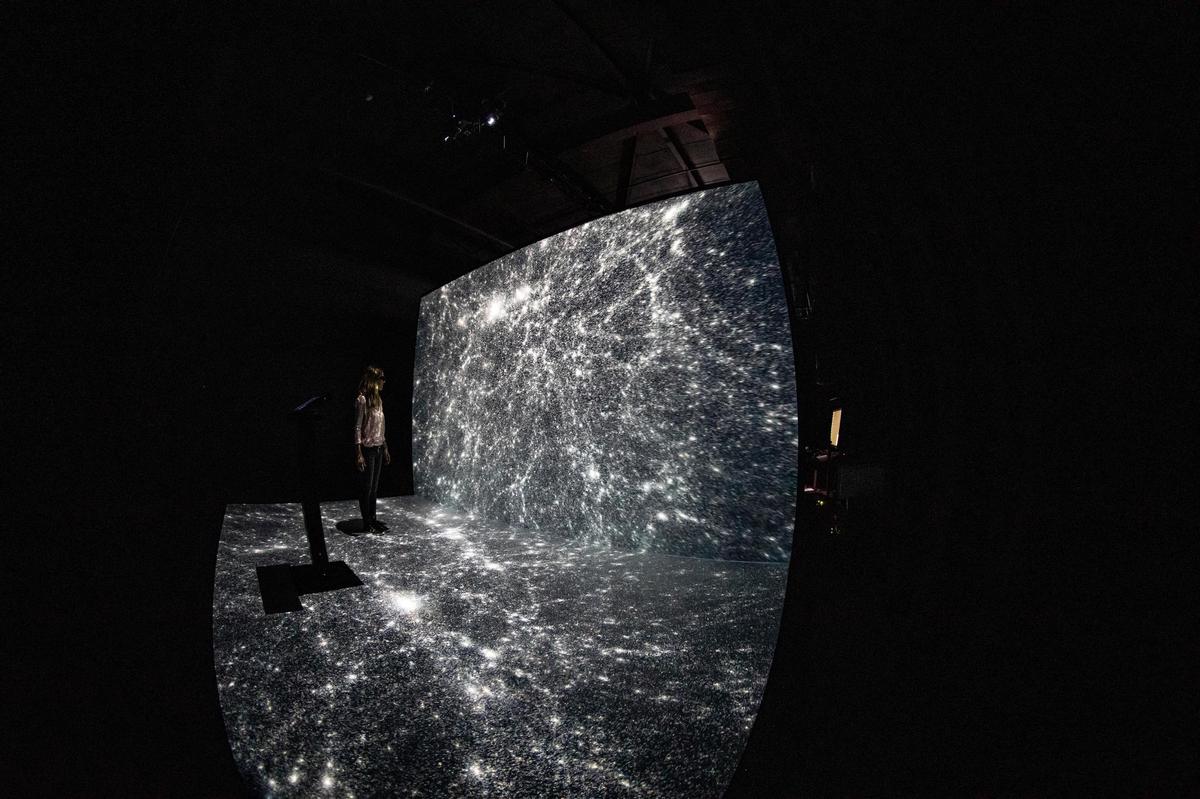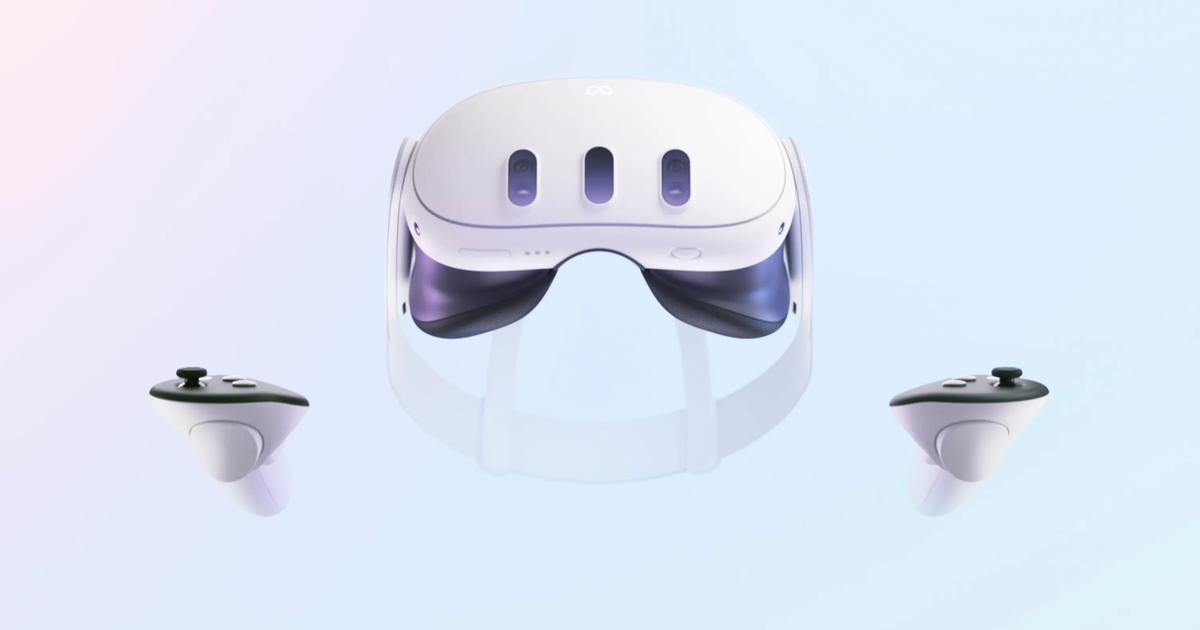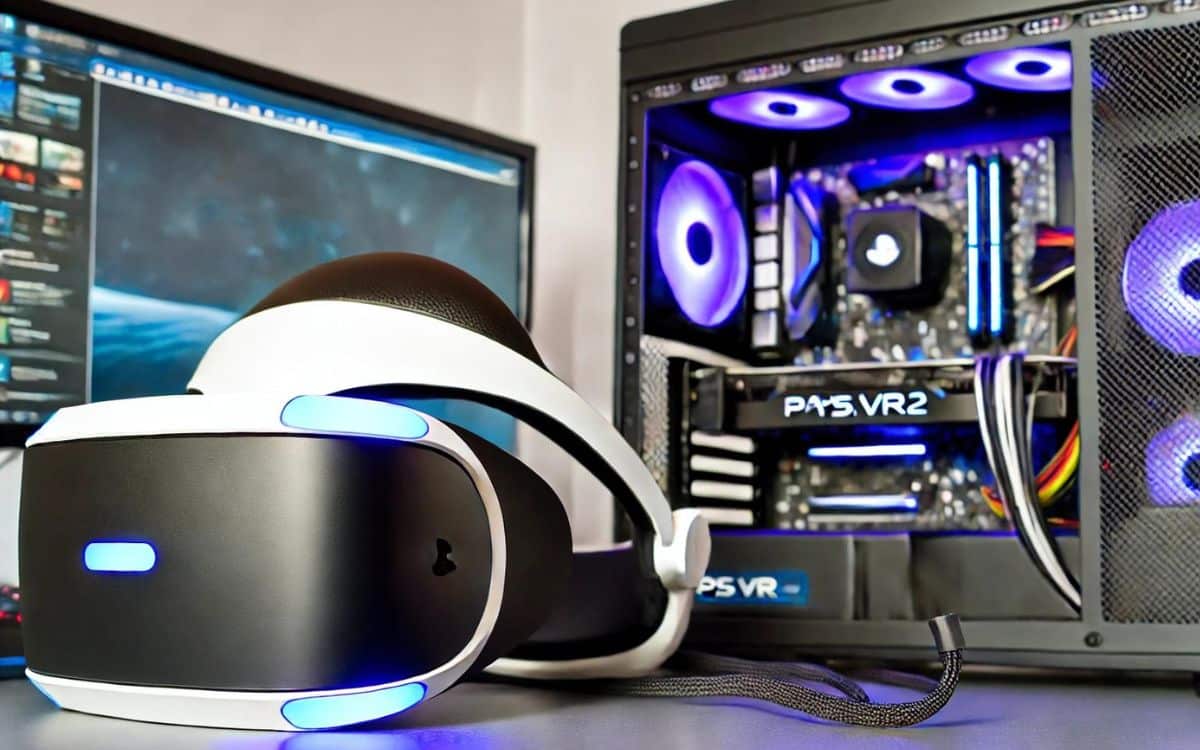published
EPFL has released software capable of making us discover every corner of the universe, in real time, in 3D and 360 degrees. Amazing experience.
Have you always dreamed of roaming completely freely in the space, the real, that surrounds us, and not some illusory representation? That’s good news, EPFL’s Laboratory of Astrophysics (LASTRO) has designed a program for this: VIRUP (for the Virtual Reality Universe Project). Mapping the entire universe – at least what we know about it so far – is, in real time, accessible in 3D via a virtual reality headset. Kind of a Google Earth the size of the universe… We jumped on it with both feet and the experience was really amazing.
Of course, it all starts in space. We’re facing Earth, close to the International Space Station… Looking down we see ourselves floating in the void and the dizzy feeling is amazing. Around Us: Thousands of Bright Spots… There are plenty of stars, planets and galaxies waiting to visit us. There are two controllers, one in each hand, to help us navigate this vast space. A bit like Google Maps where we move the map with a finger, while zooming in and out of the thumb and forefinger, here, a constant tap allows us to “capture” and move the scene. Our way on 3 axes – up and down, right and left, bring it closer or away from it – while clicking this time with both hands while extending or clasping the arms makes it possible to change the scale and then move faster, further. Or slowly approach an object (the Moon, Mars, the Voyager 2 probe, etc.), walk around it (this time physically, in our living room, because thanks to the VR headset, the object in question is there, under our noses) to examine it from all angles. ..
Two or three minutes is hardly enough to tame the system and very quickly, in a few motions, we find ourselves at the edge of space, admiring a giant cloud of bright spots: no less than the entire structure of the universe.
10 billion pieces of real-time information
At the moment, the project collects data from 8 specialized banks and has made it possible to design at least 50 million galaxies, 4,500 exoplanets discovered to date, and 3,000 satellites orbiting the Earth … “In total, the full version of The program includes more than 10 billion points displayed”, identifies astrophysicist Yves Rivas, the source of this innovation. The public app is available for free Since last month on the EPFL websiteIt’s open source, but it’s a lighter version. It’s kind of the best that combines 4 million galaxies. And if most of them are represented only in 2D, in the form of an image for contemplation if one gets close enough, 140 of them (all those Local Group, the group of galaxies that the Milky Way, Andromeda, or Triangle Galaxy belongs to) can be visited fully in 3D and 360 degrees. . What a fun good time.
For an overview of the scope of the mission undertaken by the EPFL researchers, we highly recommend watching their short film, The Archeology of Light, meticulously designed with the help of VIRUP itself, to put forth its strengths. The movie is available in a classic 2D and 360 degree version and offers a fascinating journey through this virtual world.
“The simulation sequences are so complex,” says computer engineer Florian Cabot, the program’s designer, that they sometimes require up to 11 hours of computation. Like the collision between the Andromeda Galaxy and the Milky Way, this phenomenon was predicted 6 billion years from now. This scene alone represents more than a terabyte of data. The animation is also too heavy to provide in a real-time headset and is the only movie sequence that can’t be seen through the software. But we will try to find a way to include it next year….” For the IT professional, the challenge above all was to manage a huge amount of 3D information, in real time and at a speed of 90 frames per second, in order to ensure the perfect fluidity of virtual reality. He manages to counter it only by designing his graphics engine from the ground up, because the very powerful ones already used in video games, such as the famous Unity, were either unsuitable or simply insufficient.
Petabytes of additional data
Astronomers and astrophysicists have been collecting and compiling information for decades. And it was precisely their management that prompted Yves Revaz, after 20 years of working on digital simulations of galaxies, to design VIRUP. “The benefit of this program is twofold: on the one hand, we wanted to create a tool that would allow us to analyze all the data collected, and visualize it. But also to share this knowledge with the largest number. We also obtained the Agora funding, which is earmarked by the Swiss National Fund to support communication between scientists. And the public. Without him, the project would never have seen the light of day.” Today, this data is calculated in terabytes, but things will accelerate significantly in the next few years. Particularly with the information that SKA (Square Kilometer Array) is about to gather, a giant radio telescope currently under construction, has already been heralded as one of the most ambitious scientific instruments of the 21st century. The data this time will amount to petabytes, or millions of gigabytes. Enough to enrich VIRUP significantly.
In the meantime, the program is planned to include asteroids in our solar system and celestial bodies such as nebulae or pulsars. “I am also working on a future update that will improve the work environment in the program,” says Florian Cabot. In particular by adding a list of the main things to get there directly, a bit like an “absolutely must-visit list”. Then, I’ll think of a system that’s a little more fun to move around, rather than indulging in this somewhat boring gymnastics for the arms….” “We developed this program for 3 years,” Yves Revaz continues. We will definitely be working on it for another 9 months. To improve and perfect it, but then we rely on the community to take charge. That is the principle of open source…”.
Gallery to enjoy 3D
You don’t have to be equipped with the latest in VR to enjoy the experience. One computer is enough. Preferably a competition monster anyway. Then it will be necessary to be satisfied with the 2D images and representations. Then, if you don’t have any of this at home, all you have to do is arm yourself with a little patience. Starting April 21, 2022, EPFL will be organizing an exhibition entitled “Cosmic Archeology: Explorations in Space and Time”. in the program? The program is first shown in a 180-degree dome, about ten meters in diameter, under which many people can lie down and lie down. But also through a more immersive 3D system, called “Half-Cave”, where the program is projected this time on the floor where the user is standing and on the wall in front of him. By wearing stereoscopic glasses, he can then perceive different elements floating around him.
Organizers would also like to add stations equipped with VR headsets, but nothing has been decided yet on this topic. It is also possible to distribute the program on a panorama screen, a cylindrical system with a diameter of 10 meters, 3D, but the latter unfortunately cannot be installed for this gallery. This will in any case be the first public presentation of the programme, following presentations this fall at the National Museum of Nature and Science in Tokyo and at the Dubai World Fair.

“Certified gamer. Problem solver. Internet enthusiast. Twitter scholar. Infuriatingly humble alcohol geek. Tv guru.”

